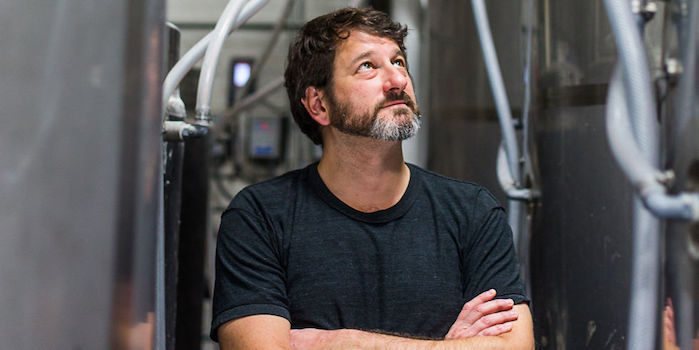This interview is part of our new Craft Corner series, which looks at current issues, stories and influencers in the craft alcohol industry. Check out our past Craft Corner piece, The Journey of Clown Shoes From Contract Brewer to Corporate Partner.
Paul Hletko, CEO and co-owner of Chicago’s Few Spirits, served nearly two years as president of the American Craft Spirits Association (ACSA). His 2016-2017 term came several years after the ACSA launched, and during an explosive growth period for the industry. I recently spoke with Hletko about his time as president and where he sees craft spirits moving forward, especially as the industry enjoys a financial boost from its first-ever federal excise tax reduction.
Kyle Swartz: What was your biggest accomplishment as ACSA president?
Paul Hletko: Making sure that the new organization had the tools to survive. We had a major coup when we hired Margie Lehrman as executive director.
The number-one thing I did was get out of Margie’s way. As a nonprofit you can have a lot of competing viewpoints, and it’s easy for people to lose sight. I made sure Margie had the tools to succeed, which did put me somewhat behind the scenes, but it also allowed the ACSA to ascend and grow.
KS: What was the greatest change in the industry after your presidency concluded?
PH: The passage of the federal excise tax parity [in the GOP tax law]. We had been working on that from the very beginning, and with the election of Mark Shilling as ACSA president last spring, he’s someone with a lot of experience in lobbying. We made a big push to get majority support for the amendment in both Congressional houses and managed to keep it all the way through the final bill.
KS: What will distilleries do with this historic tax reduction?
PH: At Few we’re hiring more people and expanding in equipment. None of that money will end up in my pocket. It’s all going back into the business. That’s how you’ll see it most commonly used: investment in both human resources and infrastructure.
I think this will keep a lot of smaller distilleries afloat. If you were $10,000-$50,000 away from growing profitably, suddenly you have a profitable business. For the bigger guys, this will help them continue to grow.
KS: Will we see more corporate interest in craft spirits in 2018?
PH: Larger suppliers are going to continue to look into craft spirits. There are not a lot of mature businesses where you see growth approaching what you see now in craft. We grew 40% last year, while the overall spirits industry was up 4%. It doesn’t take a whole lot of math to see that 4% is less than 40%.
I have friends in craft spirits who won’t take corporate money. And I say, ‘Good for them,’ because that’s the entrepreneurial spirit, and because you maintain full control of your company. But at the same time, the cash flow cycle in spirits is very long, and the ability to have access to corporate funds for costs like expansion, payroll, marketing, or route to market — it can really help. Working with the right corporate friends can really make it easier.
KS: What makes a good craft spirit today?
PH: Obviously you have to have good quality. If you don’t have quality to compete with the big boys, you’re already out of the game. Quality is the threshold.
Next, you have to be different. You cannot get by making London dry gin to compete with all London dry gin, or trying to make bourbon that tastes like Kentucky bourbon. You’re going to end up in a pricing battle with Kentucky, which they’ll win, and you certainly cannot beat them in the quality battle.
This is how Few Spirits has been able to stick around and grow. We meet their level of quality and we taste different. That is the competitive differentiator required in the craft spirits industry today.
Kyle Swartz is managing editor of Beverage Dynamics magazine. Reach him at kswartz@epgmediallc.com or on Twitter @kswartzz. Read his recent piece 7 Whiskey Trends in 2018.




